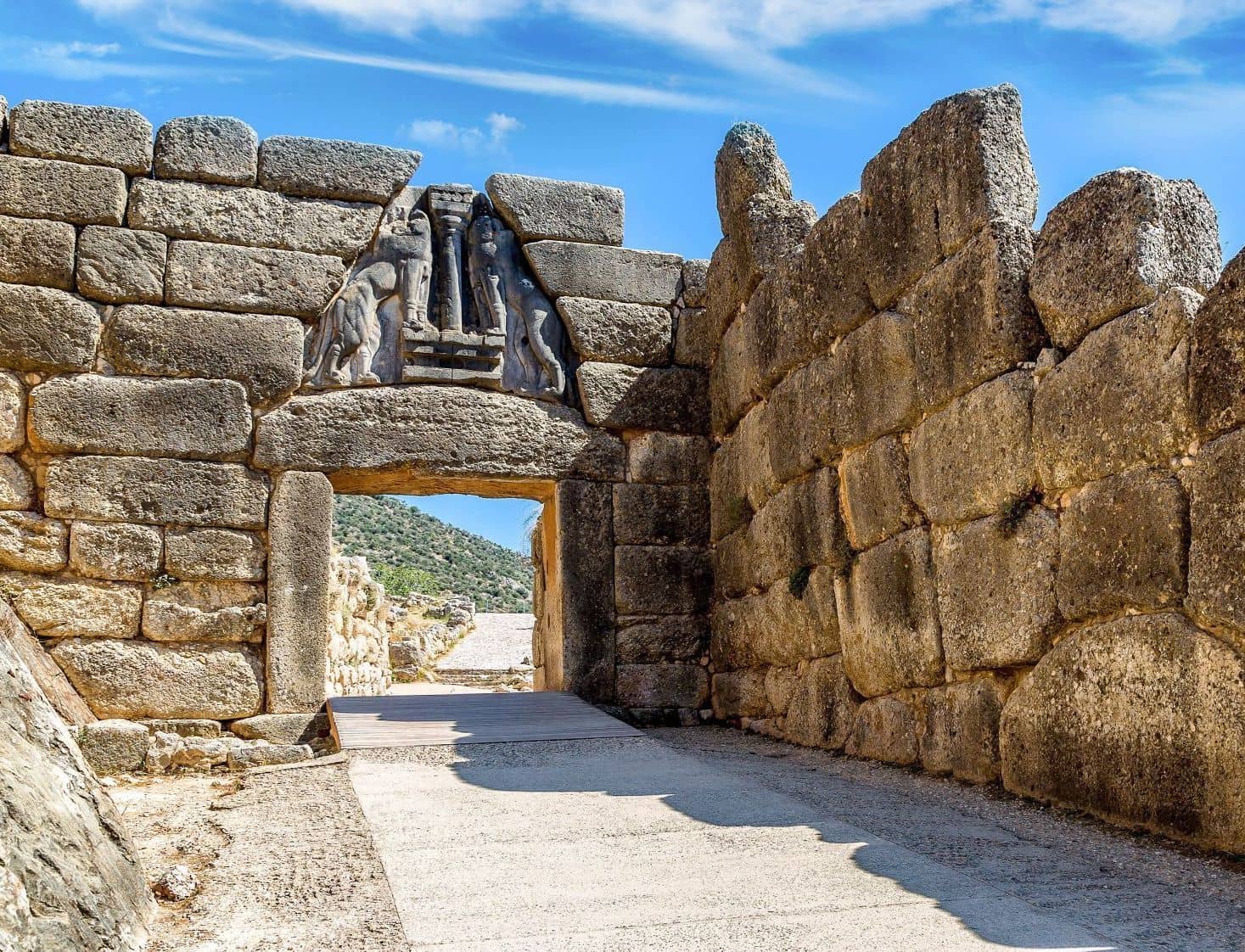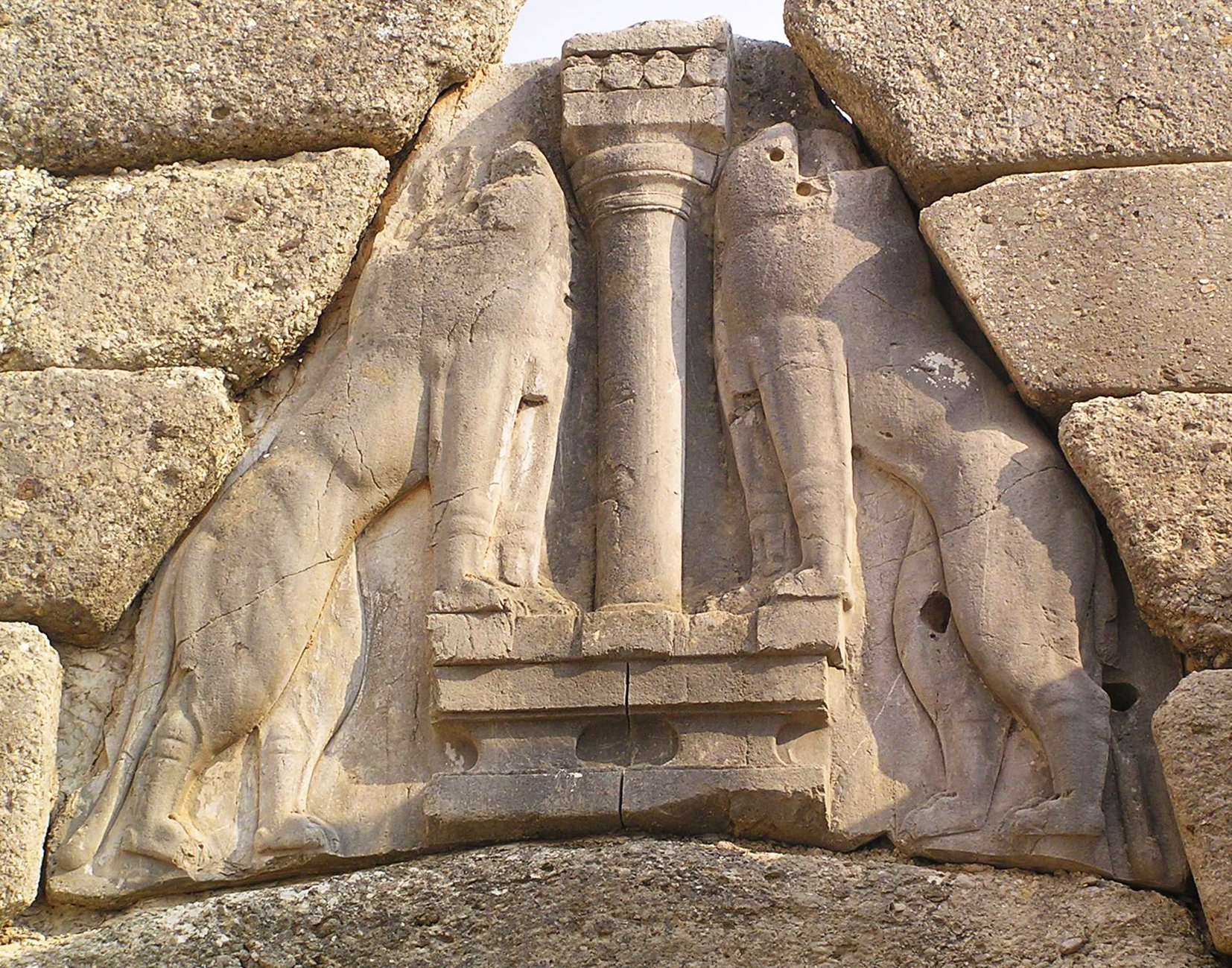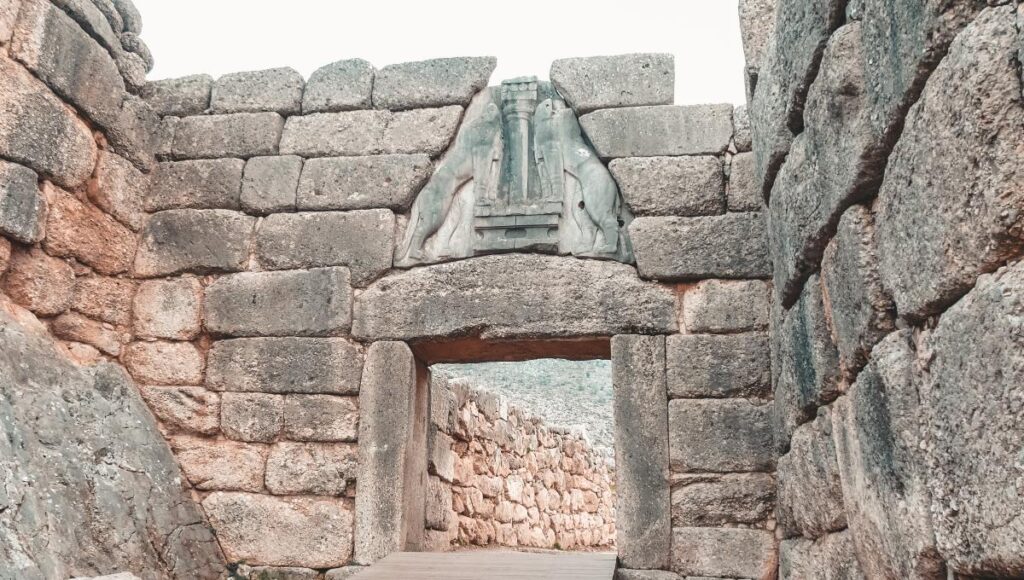The Lion Gate of Mycenae is indeed a remarkable testament to the architectural and artistic prowess of the ancient Mycenaean civilization. Dating back to around 1250 BC, this imposing entryway is not only an architectural marvel but also a symbol of the power and grandeur of Mycenae during the Bronze Age.
The most striking feature of the Lion Gate is undoubtedly the magnificent relief sculpture that adorns its lintel. The depiction of two lionesses, with their bodies facing each other and their heads turned inwards, creates a powerful and imposing presence. Despite the absence of their heads, the tufted tails of the lions are unmistakable, providing clear identification of the species represented.

Indeed, the Lion Gate of Mycenae has captured the imagination of scholars and visitors alike since antiquity. The depiction of the lionesses as guardians, symbolizing the authority and power of the Mycenaean rulers, aligns with the prevailing interpretations of the gate’s significance. The idea that the column between the lionesses could represent a goddess, possibly Hera, adds an intriguing layer of religious symbolism to the gate’s design.

The physical characteristics of the Lion Gate speak to the strategic and defensive considerations of the Mycenaean civilization. The use of massive stone blocks in the Cyclopean masonry style, renowned for its large, irregularly shaped stones fitted together without mortar, highlights the engineering prowess of the Mycenaean builders. This style of construction not only provided strength and durability to the gate but also conveyed a sense of power and grandeur, befitting the entrance to a citadel of such importance.
The inclusion of defensive features such as the ramp and bastion further underscores the military significance of the Lion Gate. By creating a narrow approach and a guarded entrance, the Mycenaeans effectively controlled access to the citadel, making it more difficult for potential invaders to breach its defenses. The covered courtyard and guard post beyond the gate served as additional layers of defense, allowing for observation and protection of the inner sanctum of the citadel.
Archaeological excavations within the fortified walls of Mycenae have revealed the presence of other monumental structures, suggesting a complex and sophisticated urban center. The discovery of potential granaries within the citadel speaks to the economic and agricultural importance of Mycenae, as well as its role as a regional power in the Bronze Age Aegean.

Indeed, the Lion Gate serves as an enduring testament to the Mycenaean civilization’s power, creativity, and architectural ingenuity. Its iconic imagery, featuring the imposing lionesses and the massive stone structure, resonates with visitors, offering a tangible connection to the rich history and culture of ancient Greece.
As the gateway to the citadel of Mycenae, this monumental entrance not only provided access to the fortified city but also served as a symbol of the civilization’s strength and authority. The craftsmanship and attention to detail displayed in the relief sculpture and the Cyclopean masonry highlight the Mycenaeans’ mastery of artistic and engineering techniques.
